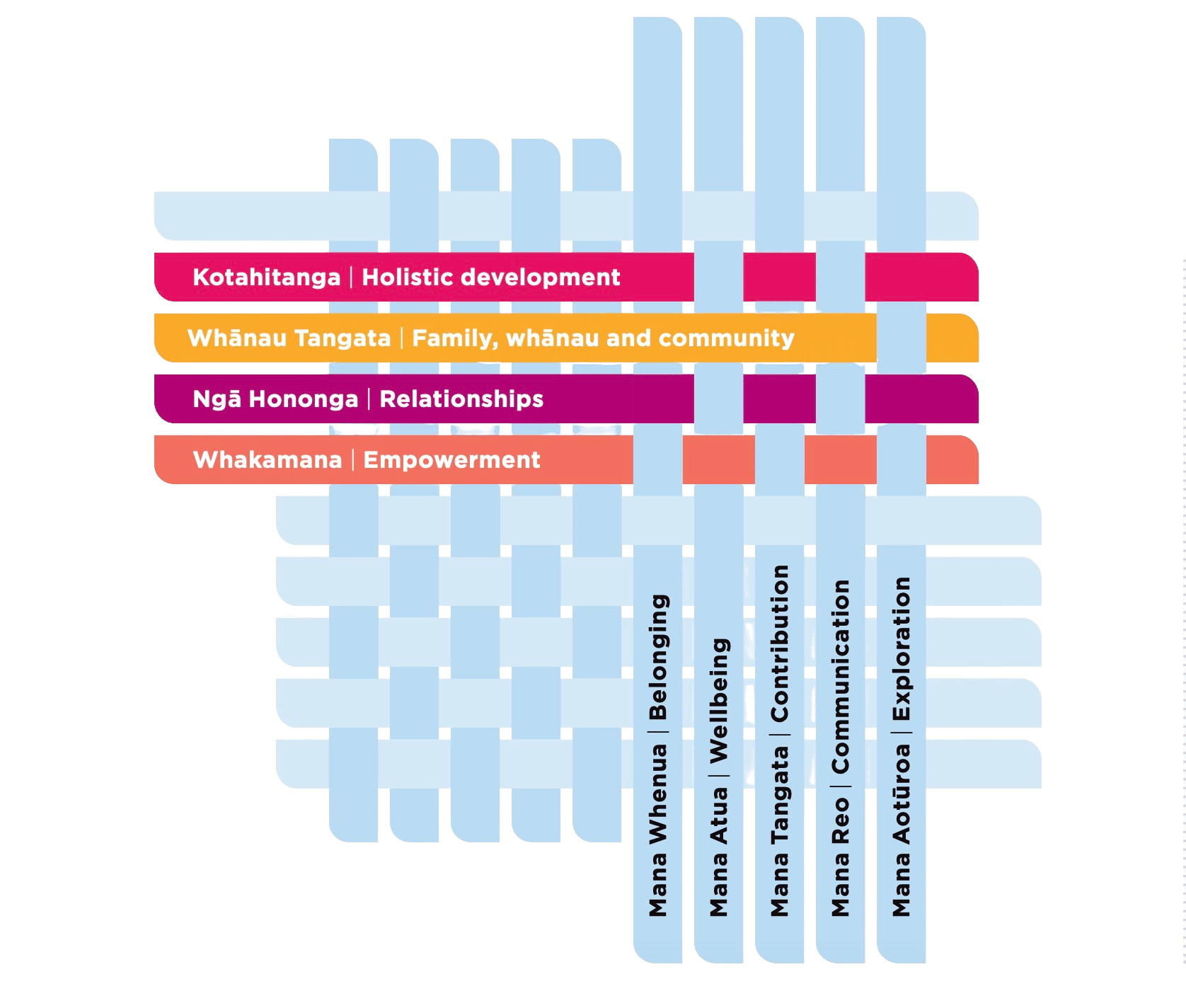Te Whāriki has been designed for and applied to our pēpē/babies and tamariki/children since its inception, and yet the kaupapa of the principles and strands are universal. This framework does not cease to be relevant to children upon their entry to primary education, and yet its application to their lives stops at that point. There is no point at which children – or people of any age, or even communities for that matter grow out of a need for empowerment, or for consideration to be given to belonging. We all require holistic development to grow, and our quality of relationships deeply impact our wellbeing. Woven across these foundational principles are the strands, which could also be understood as needs – our general wellbeing, to contribute, to belong, to communicate and to explore our worlds.
Here at NZCCSS, we know that the work we do aspires to support each of these principles and strands. And more importantly, we know that the work our member organisations undertake is grounded in these kaupapa. We also know that having a common language, with a strong evidence base, is a useful resource for shared progress.
Te Whāriki me ngā Tamariki | Te Whāriki and Middle Childhood
There are many theories and practices that relate to specific aspects of children’s lives and other holistic models that are useful (some common examples include Te Whare Tapa Whā, Fonofale). However, there is no truly holistic framework that is regularly applied specifically to five to 12-year-olds.
In considering the most appropriate way to frame this report, we decided that Te Whāriki – while previously used with younger children – would allow us a strong, evidence based and deeply New Zealand framework to shape our report and share with you the context of middle childhood in Aotearoa. We wanted a way to ensure that we considered all aspects of a person but were also able to do so at a range of levels. By its nature Te Whāriki requires high level thinking but allows for a range of uses depending on the information. It has allowed us to group concepts, and ensure we have good coverage of all aspects relevant to our kaupapa. And it gives us a language through which to discuss what we find in a way that is accessible to a range of audiences. We also think it would make a powerful assessment and evaluative tool, but will save that kōrero for another day.
In using Te Whāriki, we have confidence that we are addressing all aspects relevant to, and impacting on the lives of children. However, because our five to 12-year-olds tend to be viewed through the lens of students within their primary and intermediate schooling years (Years 1-8), and because there is a strong focus on education within the school context for these children, we have tried to focus on exploring other aspects of children’s wellbeing within this report.
Te tautuhi i Te Whāriki | Defining Te Whāriki

Te Whāriki (the mat) operates as a set of interlocking principles and strands. These principles and strands combine to provide a framework which is aspirational, specific, reflective and unique to the kaupapa/area in which it is applied.
The four broad principles of Te Whāriki are:
- Whakamana | Empowerment – [people] will be empowered to learn and grow.
- Kotahitanga | Holistic development – [people] learn and grow in a holistic way. Their intellectual, social, cultural, physical, emotional and spiritual learning is interwoven across all their experiences.
- Whānau tangata | Family, whānau and community – [people’s] family, whānau and community are recognised as part of their… experience.
- Ngā hononga | Relationships – [people] learn through positive relationships with people, places and things.
While the five strands are:
- Mana atua – wellbeing
- Mana tangata – contribution
- Mana whenua – belonging
- Mana reo – communication
- Mana aotūroa – exploration.
— Find out more about Te Whāriki